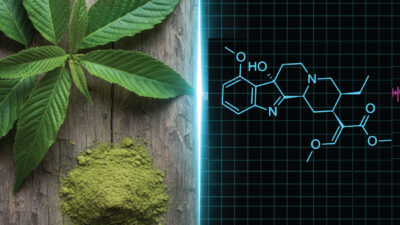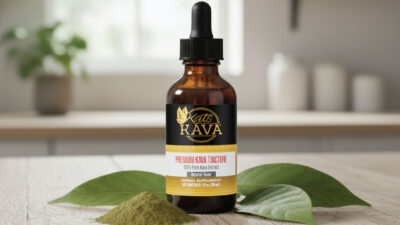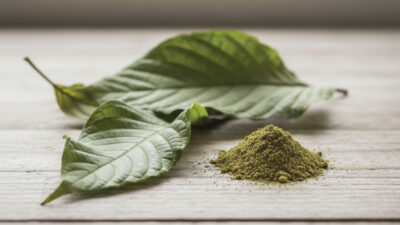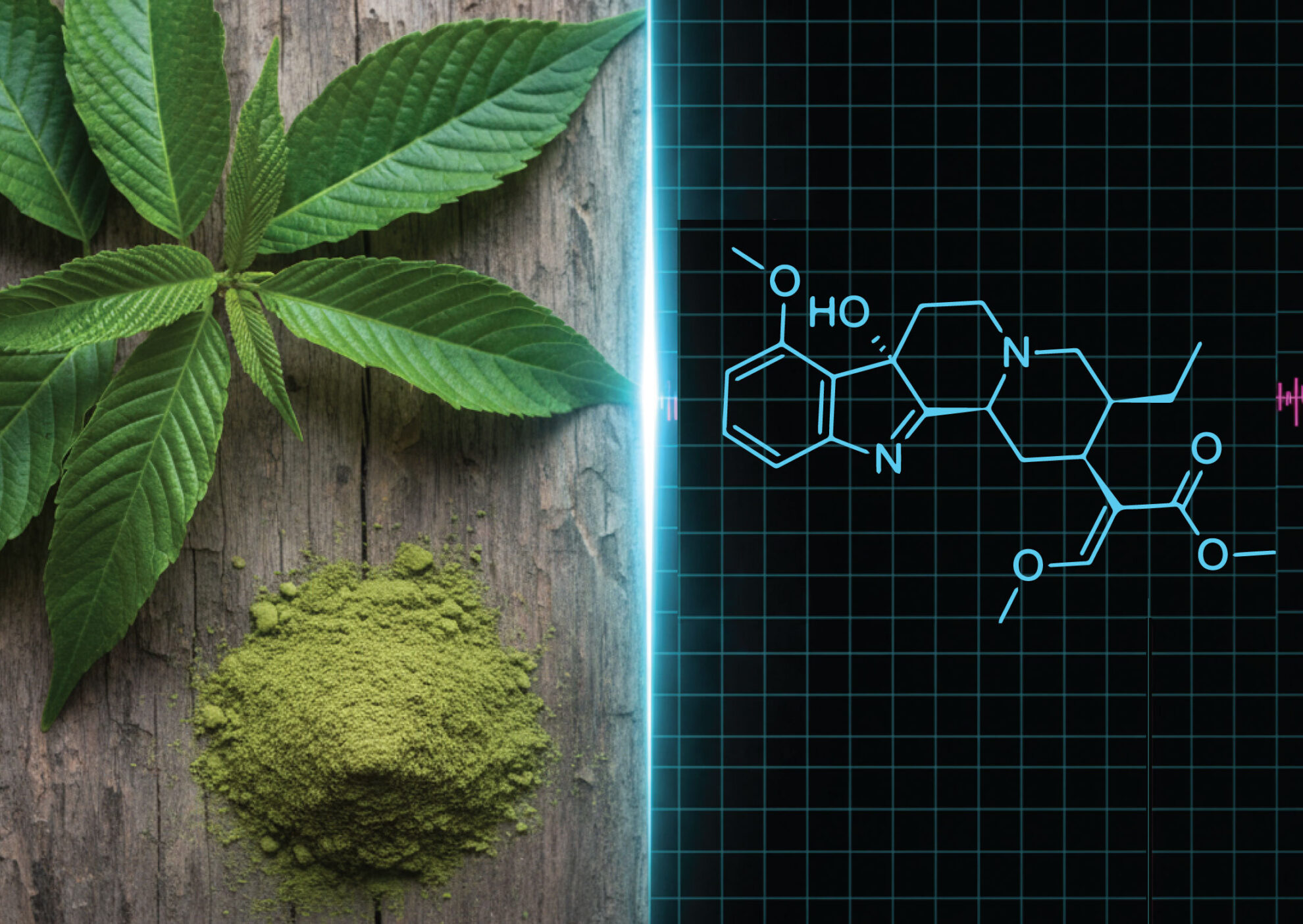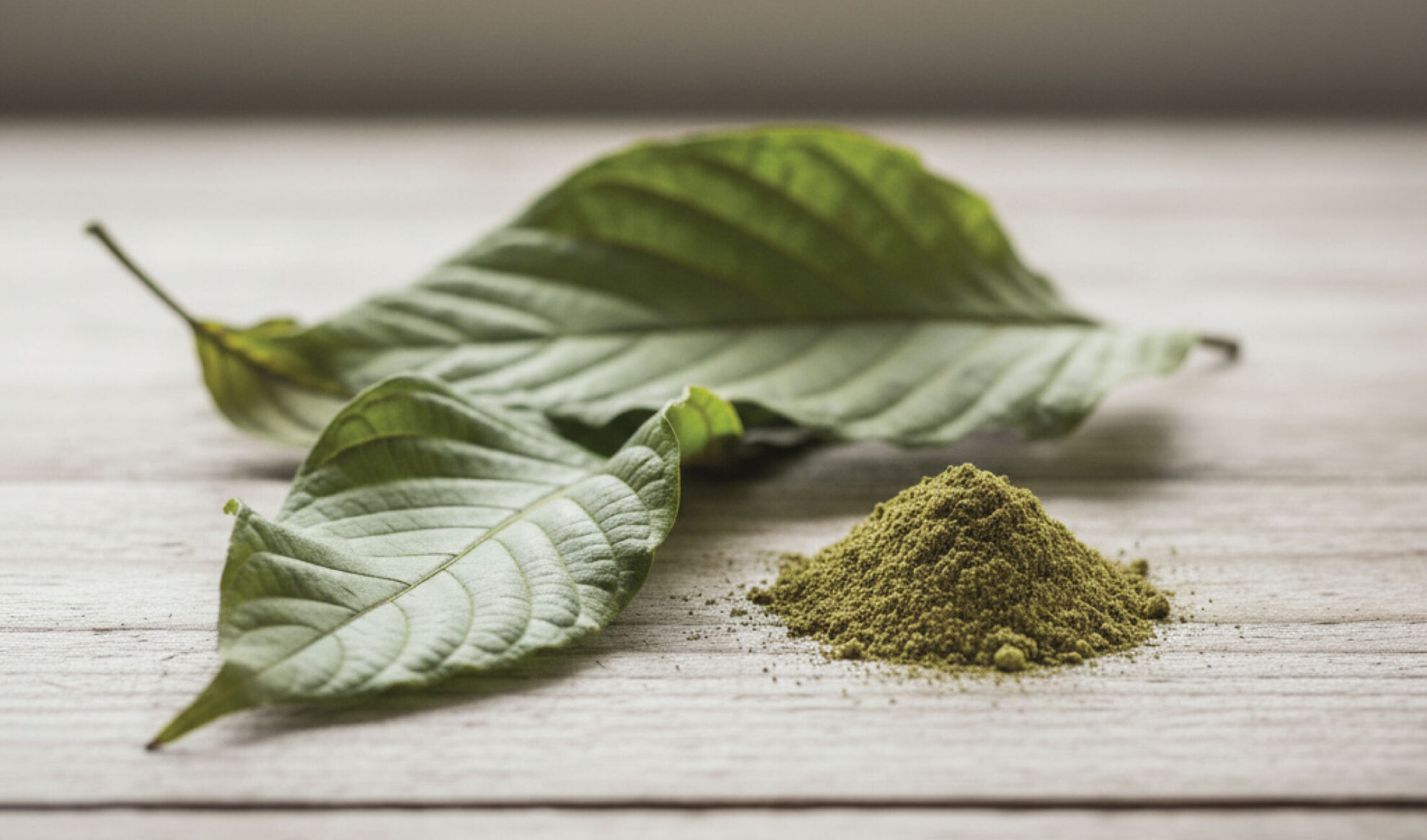Kratom comes in many forms, but two get most of the attention: powder and extract. Kratom powder is where most people start. Kratom extract is where curiosity (or potency) leads. In this guide, we’ll break down the differences between Kratom extract vs powder, how they work, how they feel, and how to choose the one that fits your needs.
Follow Kats Botanicals’ Kratom experts through the hype, what’s real, and use this guide to determine which one makes sense for your goals and experience level.
Understanding the Basics: What Is Kratom Powder?
Kratom powder is made from the dried and ground leaves of the Mitragyna speciosa tree. It retains all the naturally occurring alkaloids, particularly mitragynine and 7-hydroxymitragynine, as well as dozens of lesser-known compounds. The result is a full-spectrum experience that varies by strain, region, and post-harvest leaf care.
Common strains include:
- Red Vein – Often associated with calming properties and body relief.
- Green Vein – Often associated with general balance and clarity support.
- White Vein – Often associated with energy support and sharper motivation.
- Gold/Blends – These hybrid mixes capture the effects of multiple strains.
Most people use Kratom tea powder to brew tea, take Kratom capsules, or toss and wash. It takes longer to kick in (30–45 minutes), but the effects are steady and can last 4–6 hours. Standard Kratom powder dosage ranges from 1 to 5 grams, giving new users room to adjust gradually.
For building a consistent routine, Kat’s Botanicals’ Kratom powder offers better control and more nuance from the strains, unlike the extracts.
Want to make Kratom tea? Check out the complete guide and start brewing Kratom at home!
What Is Kratom Extract?
Kratom extract is concentrated. Instead of drying and grinding the leaf, it’s often steeped in a solvent like water or ethanol to pull out high-potency alkaloids. The liquid is reduced until a dense extract Kratom remains. This concentrate can then be turned into Kratom liquid extract vs powder products like Kratom shots, pastes, capsules, or extract-infused powders.
Unlike powder, extract is not full-spectrum. It focuses on the heavy hitters, usually Mitragynine and 7-Hydroxymitragynine, while stripping out the rest. That’s why extracts don’t list strain names: the origin doesn’t matter once the alkaloids are isolated.
Extracts are often:
- Liquid Kratom Shots – Fast, portable, flavored.
- Enhanced Kratom Powders – Regular powder infused with extract.
- Resins or pastes – Dense and used in small amounts.
Extracts usually kick in within 10–20 minutes and last 2–4 hours. It’s strong, efficient, and easier to overdo if you don’t know your limits. Discover Kat’s Botanicals’ Kratom Extract Guide for the elevated care extracts can offer. Kats Botanicals also provides the elevated educational support you need to empower your experience with extracts and use them wisely.
How Kratom Extract Is Made
Kratom extract begins with raw, unprocessed Kratom leaves. These are steeped in a solvent, such as water, ethanol, or food-safe acids, to separate and concentrate the active alkaloids, including Mitragynine and 7-Hydroxymitragynine. Once the desired compounds are extracted, the liquid is filtered and concentrated, creating a dense extract that is added to Kratom product forms such as shots, powders, capsules, or resins.
Many top-tier brands now use alcohol-free methods with solvents like citric acid or D-limonene. These allow for a broader alkaloid profile without introducing harsh chemicals.
The goal for most reputable Kratom vendors is to extract safely without compromising the integrity of the alkaloids, and put them into safe, easily-dosed delivery systems so you can use them at home. There is no industry-wide standard for potency. Labels like “10:1” or “50x” can vary widely, which makes third-party lab testing and clear dosage instructions essential when choosing a quality Kratom extract.
Different Types of Kratom Extracts
The most common formats include:
- Liquid Shots – Flavored, portable, and fast-acting.
- Enhanced Powders – Traditional Kratom infused with extract for extra potency.
- Resins/Pastes – Thick and highly concentrated; used in very small doses.
- Capsules – Encapsulated Kratom powders infused with precisely pre-measured extract.
Regardless of the form, the extract should be used carefully. It’s easy to go overboard, especially if you’re switching from powder without adjusting your dose. Learn more about proper Kratom Dosing Instructions
Key Differences Between Kratom Extract and Powder
Both powder and extract come from the same plant, but the final experience couldn’t be more different. One is raw and full-spectrum. The other is refined, concentrated, and built for speed. Understanding the Kratom effects comparison helps you choose what actually fits your needs, not just what sounds more powerful.
Potency and Alkaloid Concentration
Kratom powder contains the full range of naturally occurring alkaloids found in the leaf, most notably Mitragynine concentration and 7-Hydroxymitragynine, but also dozens of others that may contribute to subtle differences to the effects of Kratom. That broad alkaloid profile means powder tends to feel more rounded, with strain-specific nuances that reflect where and how the leaf was grown.
Extract, on the other hand, is stripped down and focused. It isolates the most potent alkaloids, often removing the rest. This creates a faster, more substantial experience, but also a flatter one. If powder is like drinking a cup of coffee with complex flavor notes, extract is a double shot of espresso. Strong, yes, but less nuanced.
Top vendors label each extract with precise Kratom alkaloid content. For example, “150 mg Mitragynine per bottle”, and back it with third-party lab testing. That level of transparency helps identify a reliable product.
Dosing and Measurement
With powder, there’s more flexibility. You can start low, around 1-2 grams, and scale up gradually based on your response. Most people use a digital scale or a leveled teaspoon to dial in a consistent dose. It’s forgiving and adaptable.
Extract is not. A small amount, even as little as 0.5 grams, can hit with the force of 4 to 5 grams of powder. There’s no wiggle room, especially for newer Kratom users. Accurate measurement is critical, and even slight misjudgments can lead to overwhelming effects. It’s important to be structured and routine with your Kratom extract use.
Onset and Duration of Effects
- Powder: Slower onset (30–45 minutes), longer-lasting (4–6 hours), and more gradual in its climb.
- Extract: Rapid onset (10–20 minutes), shorter duration (2–4 hours), and a sharper, more immediate peak.
That faster onset can be useful, but it also makes it easier to overdo, especially if you don’t wait long enough before re-dosing.
Taste and Preparation
Kratom powder has a reputation: it’s bitter, earthy, and not exactly enjoyable to drink. Preparing it takes a bit of effort, whether you’re brewing Kratom tea powder, loading capsules, or doing the classic toss-and-wash method. But for many users, the routine becomes part of the ritual, a way to control the process.
Extract is made for ease. Liquid shots are flavored, portable, and pre-measured. Enhanced powders and capsules are fast and discreet. If taste and convenience are a priority, extract often wins, but you trade some control for that simplicity.
Price and Value
Kratom powder is more affordable on a per-dose basis and is easier to stretch over time. For regular users, this matters, especially if you’re using 3 to 5 grams per session.
Extract is more expensive, both in terms of upfront costs and per-serving costs. But you’re using far less each time. If you only reach for Kratom occasionally or need something stronger for specific situations, the cost might be justified. Just know what you’re getting and what you’re giving up.
Pros and Cons of Kratom Powder
Pros:
- Full-spectrum alkaloids for more natural effects.
- Easier to dial in precise doses.
- Lower cost per serving.
- Strain-specific effects (Red, Green, White, etc.).
Cons:
- Bitter taste can be off-putting.
- Slower onset and more prep required.
- Less convenient for travel or quick use.
Pros and Cons of Kratom Extract
Pros:
- Fast-acting and very potent.
- Convenient and portable.
- Requires smaller doses for strong effects.
Cons:
- Easy to take too much.
- Higher cost per use.
- Lacks full-spectrum nuance.
- Can build a Kratom tolerance more quickly.
Which Is Better: Extract or Powder?
It depends on your goals.
If you’re looking to build a consistent, sustainable Kratom routine, one that allows for fine-tuned control, strain experimentation, and long-term balance, powder is the better choice. It’s more versatile, more affordable, and easier to learn from.
If you’re already familiar with powder and want something stronger, more compact, or faster-acting for specific situations, extract has a place. It’s not for everyday use or casual experimentation, but it can be useful when used intentionally and sparingly.
Side-by-Side Comparison Table
| Feature | Kratom Powder | Kratom Extract |
|---|---|---|
| Strength | Mild to moderate | Very potent |
| Alkaloid Content | Full-spectrum | Concentrated (MIT, 7-OH) |
| Dosage | 1–5g typical | 0.5–1g typical |
| Onset | 30–45 min | 10–20 min |
| Duration | 4–6 hrs | 2–4 hrs |
| Cost per Dose | Lower | Higher |
| Ideal For | Beginners, daily use | Experienced, quick relief support |
When to Choose Kratom Powder
You’ll get the most from powder if:
- You’re new to Kratom and still learning how it affects you.
- You want long-lasting, full-spectrum effects.
- You’re interested in trying different Kratom product types.
- You prefer to build tolerance slowly and control your dose precisely.
When to Choose Kratom Extract
Extract might be right if:
- You’ve used powder and want something stronger or faster.
- You need quick results or on-the-go convenience.
- You’re using Kratom situationally, not daily, and can tolerate its intensity.
Capsules and shots offer quick-dose convenience, but they come with trade-offs. Unlike powder, these formats rely on pre-measured servings, making them ideal for portable, rapid use, but you lose the flexibility of Kratom powder vs extract dosing control.
Is Kratom Extract Safe for Beginners?
Generally speaking, even experienced users should approach extract use with caution. For beginners, the risk of taking too much too quickly is real, and the consequences aren’t mild. Overwhelming sedation, nausea, and discomfort may occur when extracts are misused.
Powder gives you more room to explore, learn, and adjust. Once you’ve built a sense of how your body reacts to Kratom, extracts can be a helpful addition, but it’s not where you start.
Safety & Regulatory Reminder
Kratom remains unregulated by the FDA, and several extract products have been recalled due to contamination concerns. Always choose vendors who provide lab-tested, pure Kratom with clear product batch data and full disclosure.
Final Thoughts: Choosing What Works for You
There’s no one-size-fits-all answer to Kratom extract vs powder, just which better suits your goals and preferences. Kratom powder gives you range, control, and consistency, especially if you’re building a daily or long-term routine. Kratom extract delivers speed and strength, but it demands respect and moderation.
Whichever you choose, make sure you’re buying from trusted vendors with lab-tested Kratom and clear labeling. That’s how you get the best experience and peace of mind.
To learn more, visit trusted sources such as:
FAQs About Kratom Extract vs Powder
No. The FDA has not approved Kratom as a supplement, food additive, or treatment.
Federally, Kratom is considered unregulated by the FDA. Some states restrict or ban its sale – be sure to check Kratom legality near you.
Mitragynine (~40–66%) and 7‑Hydroxymitragynine (~2%) are the primary alkaloids, as demonstrated in Kratom lab studies.
This is a decision to be made based on your unique physiology and support needs. For better dosing control and nuanced effects, choose powder. For high-powered support when the time calls for it, extracts can be a good option if used properly.

